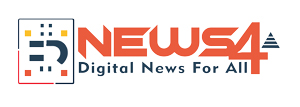Introduction: Why Your Location Matters More Than Ever for Career Success
The American Dream is getting a regional rewrite in 2025, and millennial and Gen Z workers are navigating one of the most dramatic economic shifts in generations. If you’re wondering why your career trajectory feels different than what your parents experienced, you’re not imagining it—the economic landscape has fundamentally changed, and geographic location now plays a critical role in career advancement and financial security.
Understanding regional job market trends, housing affordability by city, and which industries are growing where can mean the difference between financial stability and living paycheck to paycheck. This comprehensive guide breaks down the 2025 economic outlook for young workers across every U.S. region.
The Reality Check: What Young Workers Are Actually Facing in 2025
The Income Growth Challenge
Recent findings show that nearly half of Gen Z (48%) and millennials (46%) report feeling financially insecure in 2025—a significant increase from previous years. The post-pandemic economic recovery hasn’t delivered equal benefits for all age groups, and young workers are feeling the squeeze.
Income growth for 25-to-29-year-olds has decelerated to one of the lowest levels since 2011. For a generation that historically relies on job hopping to advance their careers and build wealth, this slowdown couldn’t come at a worse time. Gen Z workers now average just 1.1 years in their first jobs during the initial five years of their careers—significantly shorter than millennials (1.8 years), Gen X (2.8 years), and Baby Boomers (2.9 years).

The Housing Affordability Crisis
The housing market tells an even starker story. The income needed to afford a median-priced home has skyrocketed approximately 70% in just six years—from around $67,000 in 2019 to $114,000 in 2025, according to current housing market analysis.
The median home sales price in the United States reached $410,800 in the second quarter of 2025, making homeownership increasingly out of reach for young professionals. This reality is forcing both generations to rethink traditional career and life milestones.
Financial Insecurity and Priorities
A striking 89% of Gen Z employees want purpose-driven work, with 98% citing cost of living as their primary financial concern. However, what “cost of living” means varies dramatically depending on which U.S. region you call home—and that’s where strategic career planning becomes essential.
The New Geography of Opportunity: Regional Breakdown for 2025
The South: Leading the Nation in Employment Growth
Best Cities: Austin, TX | Atlanta, GA | Raleigh, NC | Charlotte, NC | Nashville, TN | Tampa, FL
For the fourth consecutive year, the South leads the nation in employment growth for young professionals. Cities throughout the region are experiencing explosive growth, particularly in high-income sectors like technology, biotechnology, healthcare, and professional services.
Austin, Texas, ranks as the top spot for Gen Z graduates to live in 2025, boasting high job listings (third in the country) and strong career prospects. Meanwhile, Atlanta dominates as the top Southern city for Gen Z, with its youthful energy, 7.3 parks per 10,000 residents, strong university presence, and booming innovation scene.
What this means for millennial and Gen Z workers:
- Job Market Strength: Charleston is seeing 3.7% growth in high-income jobs—the highest in the nation. The Research Triangle in North Carolina (Raleigh-Durham-Chapel Hill) has emerged as one of the East Coast’s biggest tech hubs, with major companies like Apple and Google building significant campuses.
- Industry Focus: Manufacturing contributes nearly $3 trillion annually to the U.S. economy, and Southern states are seeing increased applications from Gen Z workers in advanced manufacturing roles requiring technical skills.
- Affordability Advantage: Southern cities offer significantly better cost-of-living ratios compared to coastal markets. Raleigh offers top-tier STEM opportunities, high job accessibility, and affordable living—all crucial factors supporting Gen Z’s upward mobility.
The Challenge: Even with strong job growth, competition is intensifying as more workers discover these opportunities. Remote workers from higher-cost areas are also driving up housing costs in popular Southern cities.
External Resources:
The West: Tech Opportunities with Affordability Challenges
Best Cities: San Francisco, CA | Seattle, WA | Austin, TX (cross-regional) | Denver, CO | Salt Lake City, UT | San Jose, CA
The West continues to attract millennials and Gen Z workers drawn by the promise of technology careers and innovation-driven industries. San Francisco, Seattle, and San Jose ranked 2nd, 3rd, and 8th respectively among the best cities for Gen Z graduates in 2025.
What this means for young professionals:
- Tech Dominance: Austin has 16.3% of job roles in technology—nearly double the national average. Seattle sees a large concentration of highly educated young people and offers world-class opportunities in tech, science and innovation, health, biotech, and sustainability leading to influential, high-paying jobs.
- Salary Premium: San Francisco employees can expect to earn significantly more than workers in lower-cost markets. San Francisco boasts the #4 walk score nationally and comes in #3 for entertainment and #2 for diversity, with average salaries that offset high rents better than many smaller cities.
- Lifestyle Benefits: Despite high housing costs, San Francisco ranks surprisingly well in affordability (13th nationally) when salary levels are factored in.
The Challenge: The West continues to experience domestic population outflows, though they’re improving modestly. Housing costs remain a significant barrier to entry. Cities like San Francisco, while offering high salaries, require careful financial planning to build wealth.
Regional Considerations: The Mountain states within the Western region are becoming key drivers of growth. Salt Lake City ranks in the top 10 cities for Gen Z workers, offering affordability, expanding job markets, and Gen Z-friendly amenities.
External Resources:

The Midwest: Emerging as the Millennial and Gen Z Hot Spot
Best Cities: Minneapolis, MN | Chicago, IL | Madison, WI | Ann Arbor, MI | Columbus, OH | Kansas City, MO | Des Moines, IA
The Midwest is experiencing a renaissance for young workers, with affordability meeting opportunity in ways that coastal cities can’t match. Minneapolis reclaims the top spot in 2025 for Gen Z, thanks to affordability (6.4% below the national average), a robust youth population, and the second-lowest unemployment rate in national rankings.
What this means for career-focused young professionals:
- Education Hub Advantage: Ann Arbor, Michigan, takes first position as the best metro for Gen Z graduates with its impressive share of highly educated Gen Z adults (#1 among cities examined), young population (#3), and overall livability (#6).
- Job Market Stability: Kansas City has affordability that’s unparalleled with prices almost 9% lower compared to the national average, along with the second-cheapest internet costs and above-average scores in jobs for recent graduates.
- Industry Diversification: Chicago ranks as the sixth-best option for Gen Zers in the Midwest and 13th nationwide, offering more than 6,500 recreational establishments and ample opportunities for eco-friendly commutes as almost 28% of commuters travel to work via public transportation, bike, or by walking.
- Career Development Programs: Minneapolis benefits from youth development programs like TechHire Minneapolis and AchieveMpls, focused on offering career readiness, training paths, and internships, contributing to one of the strongest tech and innovation scenes in the region.
The Midwest Advantage: Madison, Wisconsin, Lincoln, Nebraska, Cincinnati, St. Louis, and Cleveland all placed in the top 10 mid-sized cities for Gen Z, with Madison ranked #1 overall. The region offers stability over explosive growth—ideal if you value affordability and quality of life while still accessing solid career opportunities.
External Resources:
The Northeast: Specialized Opportunities with High Costs
Best Cities: Boston, MA | New York City, NY | Philadelphia, PA | Cambridge, MA | Alexandria, VA | Pittsburgh, PA
The Northeast faces population growth deceleration and manufacturing losses, but tells a more nuanced story for educated young workers in specific industries.
What this means for millennial and Gen Z professionals:
- Education Pipeline: Boston, the only Northeastern city to crack the top 10 for Gen Z, shines thanks to its high educational enrollment (over 61%) and the nation’s largest share of graduate-friendly jobs.
- Millennial Migration: Alexandria, Virginia, tops the list with 12.7% of its population—19,486 people—being recent millennial arrivals, with nearly half (46%) coming from out of state. Cambridge, Massachusetts, ranked second with millennials making up 12.2% of the population, or 14,197 new residents.
- Salary Premium: If you’re in healthcare, education, biotechnology, or pharmaceutical industries, the Northeast—particularly the Philadelphia-Boston corridor—offers world-class opportunities with average salary ranges hitting $70,000-$105,000.
- Urban Density Benefits: New York City had the most millennials move in, with 362,649 arrivals in one year, making up 4.4% of its population—double that of Los Angeles.
The Challenge: High cost of living and shelter costs remain significant barriers. Manufacturing employment is declining, and the region has relatively high CPI inflation, though shelter costs may moderate.
External Resources:
Understanding Gen Z and Millennial Workforce Priorities in 2025
Career Development and Job Tenure Trends
One in 3 Gen Z workers plans to change jobs within the next year, not because of disloyalty, but because of a drive for growth and perceived lack of pathways within current roles. This high mobility is a feature, not a bug, of Gen Z’s career strategy.
Gen Z and millennial workers are looking to their managers to offer guidance, support, inspiration, and motivation—they want mentorship and help in setting boundaries to maintain a healthy work/life balance.

Flexibility and Work Arrangements
72% of Gen Z workers have either left or considered leaving a job because their employer did not offer a feasible flexible work policy. The post-pandemic shift to remote and hybrid work has permanently changed expectations.
65% of Gen Z employees find workplace flexibility in the remote or hybrid model to be the most important factor when looking for a job. This flexibility can offset some regional cost-of-living differences by allowing workers to live in affordable areas while accessing higher-paying remote opportunities.
AI Skills and Career Advancement
59% of Gen Zers believe that generative AI skills are somewhat or highly required for their career advancement. 75% of Gen Z workers use AI to learn new skills, ahead of millennials (71%), Gen X (56%), and Baby Boomers (49%).
The AI literacy gap is creating regional divides. Tech hubs in the West and South are seeing more rapid AI adoption, meaning workers in these regions need to prioritize AI skills more urgently.
Purpose-Driven Work and Values
About 75% of Gen Z workers consider diversity and inclusion when deciding which company to work for, and 70% want a personal fit with their job values, such as responsible waste disposal and merit-linked growth opportunities.
Financial security matters enormously. 60% of Gen Z workers seek competitive salaries and benefits such as student loan assistance, recognizing that purpose alone doesn’t pay the bills.
Strategic Career Moves for Young Workers in 2025
1. Embrace Geographic Mobility as a Career Asset
The traditional advice to “stay put and climb the ladder” doesn’t work when the ladder itself is shaky. Workers in high-growth regions are seeing better career acceleration than those in declining markets.
Action Step: Research the best cities for young professionals in your industry and consider strategic relocations every 2-3 years early in your career.
2. Look Beyond Traditional Coastal Hubs
The South dominates with five cities in the top 10 for Gen Z, propelled by job growth, warm weather, and education hubs like Atlanta, Austin, and Raleigh. These aren’t just cheaper alternatives—they’re becoming legitimate economic powerhouses.
Madison, Wisconsin, Lincoln, Nebraska, and Des Moines, Iowa offer the perfect balance of Gen Z priorities—affordability, opportunity, and livability.
3. Calculate Total Economic Opportunity, Not Just Salary
An $80,000 job in Raleigh might offer better wealth-building potential than a $100,000 job in San Francisco when accounting for:
- Housing costs and rent burden
- State and local taxes
- Transportation expenses
- Healthcare costs
- Quality of life factors
Tool: Use online cost-of-living calculators to compare your actual purchasing power across different regions.
4. Invest in Industry-Specific Regional Networking
As job markets become more regional rather than national, having strong local professional networks in growth markets becomes increasingly valuable.
Manufacturing is seeing increased applications as Gen Z diversifies away from pure tech careers and discovers modern manufacturing’s technological sophistication. Regional manufacturing hubs offer opportunities that aren’t available nationwide.
5. Leverage Remote Work for Geographic Arbitrage
For roles that offer remote flexibility, consider living in lower-cost regions while earning salaries from higher-cost markets. This strategy can accelerate wealth building significantly.
Millennials were the age group most interested in non-traditional types of work, including freelance (16.5%), gig (15.0%), and temporary jobs (12.6%), showing that diverse income strategies are becoming mainstream.
6. Prioritize Industries with Regional Growth
Different industries are booming in different regions:
- Tech: Austin, San Francisco, Seattle, Salt Lake City
- Healthcare: Boston, Philadelphia, Chicago, Minneapolis
- Manufacturing: Southern states, Midwest industrial cities
- Finance: New York, Charlotte, Chicago
- Biotech: Boston, San Diego, Raleigh-Durham
7. Stay Informed About Regional Economic Indicators
Monitor these key metrics for your target cities:
- Job growth rates by industry
- Housing affordability trends
- Population migration patterns
- New business formations
- Infrastructure investments
Resources:

The Long Game: Why This Decade Matters for Millennial and Gen Z Wealth Building
Despite current challenges, there’s a compelling case for strategic optimism. By 2034, 80% of the workforce in advanced economies will comprise millennials, Gen Z, and the first Gen Alphas to become adults.
Gen Z is expected to become the largest and richest economic force by 2035, with their income projected to reach $74 trillion by 2040. The great wealth transfer—$84 trillion expected to pass from seniors and Baby Boomers to younger generations by 2045—will dramatically reshape the economic landscape.
But here’s the critical point: Where you position yourself regionally over the next decade will significantly impact your ability to benefit from these long-term trends.
Building Wealth Through Smart Regional Choices
The decisions you make between ages 22-32 have outsized impacts on lifetime wealth accumulation. Choosing regions with:
- Strong job growth in your industry
- Reasonable housing costs
- Good quality of life
- Career advancement opportunities
…can mean the difference between entering your 30s with substantial savings and retirement accounts versus high debt and minimal assets.
Industry-Specific Regional Recommendations
For Tech Workers
Best Regions: Austin, TX | San Francisco Bay Area | Seattle, WA | Research Triangle, NC | Salt Lake City, UT
Tech salaries remain highest in coastal cities, but the cost-adjusted value is often better in emerging hubs like Austin and Salt Lake City.
For Healthcare Professionals
Best Regions: Boston, MA | Minneapolis, MN | Philadelphia, PA | Chicago, IL | Nashville, TN
Healthcare employment remains stable across regions, but top research hospitals and biotech firms cluster in these cities.
For Finance and Business Professionals
Best Regions: New York, NY | Charlotte, NC | Chicago, IL | Boston, MA | Dallas, TX
Charlotte has emerged as a major banking center with lower living costs than New York. Chicago offers diverse finance opportunities with Midwest affordability.
For Manufacturing and Engineering
Best Regions: Southern states | Midwest industrial cities | Research Triangle, NC
Advanced manufacturing roles requiring technical skills attract digital natives interested in hands-on work, with supply chain and operations roles growing in popularity as Gen Z recognizes these functions’ critical importance.
For Creative and Media Professionals
Best Regions: Los Angeles, CA | New York, NY | Austin, TX | Atlanta, GA | Nashville, TN
While traditional media centers remain important, emerging creative hubs in the South offer lower costs with growing opportunities.
Addressing Common Concerns and Questions
“Is Remote Work Still a Viable Career Strategy?”
Yes, but it’s evolving. Many companies are implementing hybrid models. The key is finding employers who offer genuine flexibility rather than mandating frequent office attendance. Remote work can provide the best of both worlds—high-paying jobs without high-cost living.
“Should I Prioritize Salary or Cost of Living?”
Both matter, but focus on net disposable income after housing, taxes, and essential expenses. A lower salary in a low-cost area often provides better quality of life than a high salary in an expensive city where most income goes to rent.
“How Important Are State Taxes?”
Very important for long-term wealth building. States with no income tax (Texas, Florida, Tennessee, Washington, Nevada) can save you 3-10% of gross income annually. Over a 30-year career, that’s substantial wealth.
“Will AI Eliminate My Job?”
Three-quarters of Gen Zs (74%) and millennials (77%) believe generative AI will impact the way they work within the next year. Rather than elimination, AI is transforming roles. Focus on developing AI literacy and skills that complement AI capabilities.
“Is Buying a Home Still Possible?”
Yes, but strategies have shifted. Many young workers are:
- Buying in lower-cost regions
- Using FHA loans with 3.5% down payments
- House hacking (renting rooms to offset mortgages)
- Waiting longer and building larger down payments
- Considering multi-generational housing
Your Regional Career Strategy for 2025
The economic outlook for millennial and Gen Z workers in 2025 isn’t uniformly bleak or rosy—it’s regionally diverse in unprecedented ways.
Regional Winners:
- The South: Leading job creation, especially in tech and manufacturing
- The Midwest: Best affordability-to-opportunity ratio
- The West: Highest salaries in tech, but with affordability challenges
- The Northeast: Specialized opportunities in education, healthcare, and finance
Your economic future increasingly depends not just on what you do, but where you choose to do it.
Key Takeaways for Success:
- Research extensively before relocating—use data, not just anecdotes
- Network regionally—build connections in your target markets
- Calculate total costs—salary is just one piece of the puzzle
- Stay flexible—be willing to move again if opportunities warrant
- Invest in skills—particularly AI literacy and technical capabilities
- Build emergency funds—3-6 months of expenses in your target cost-of-living
- Think long-term—today’s decisions compound over decades
The American Dream hasn’t disappeared—it’s just relocated to different zip codes. Workers who stay informed about regional trends, remain mobile, and strategically position themselves in markets where their skills and ambitions align with local economic realities will thrive.
In a world of perma-change, powered by AI, organizations that harness the nuances of every generation will lead the way—and workers who understand how to navigate regional differences will build the most successful careers.
#GenZ #Millennials #CareerAdvice #JobMarket2025 #GenZJobs #MillennialCareers #YoungProfessionals #USJobMarket #CareerGrowth #RegionalJobs #WorkplaceTrends #GenZEmployment #CareerTips #JobSearch2025 #EconomicOutlook


